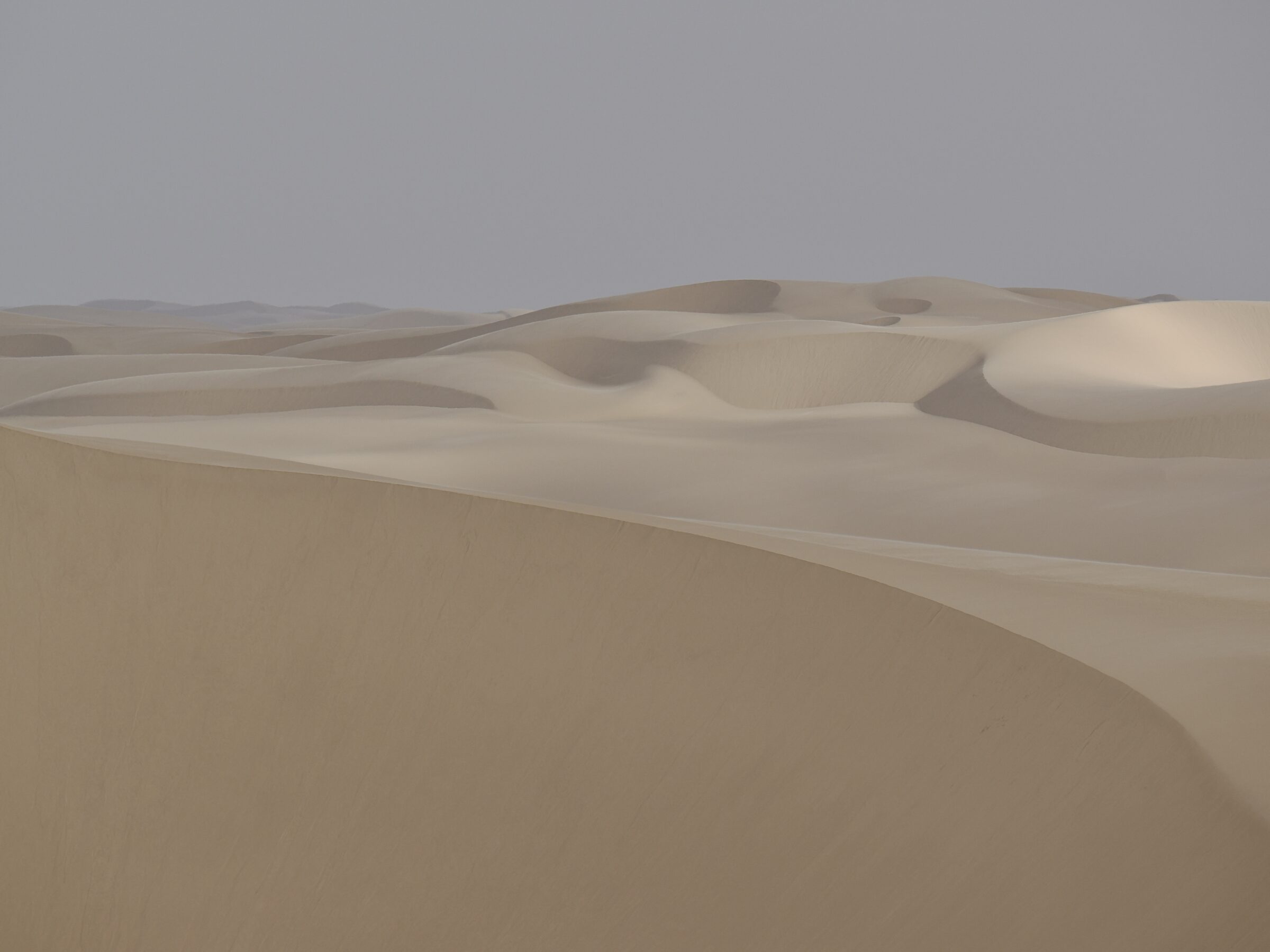These dunes are just behind the Skeleton Coast, not far from the generally-dry mouth of the Hoarusib River.
Their appearance changes radically, as the sun’s position shifts, clouds form, move or disappear, and as fog rolls in, intensifies, or “burns” off.
Generally reckoned the world’s oldest desert, the Namib is “another world”, albeit part – a singular part – of “our” planet.
Humans cannot yet directly experience the Martian landscape, but a few of us are lucky enough to have experienced the Namib.
In few parts of “our” world is the “footprint” of Homo sapiens so barely-apparent.
Whatever sun, wind and fog were doing at the very same time of day, if you were not very many kilometres further inland, the Namib’s mountains, vegetation, dunes and rock-scapes would present a very different “face”.
Eventually, Pelican Yoga will pay, separately, much more detailed attention to the Namib’s “coastal” and “inland” aspects.
Only the Atacama is a less rainy location than the Namib’s Atlantic Ocean edge.
The best Namib photos are yet to come, I promise; this one is copyright Doug Spencer, taken at 5.31 pm on 14 November 2022.

A sea of sand, a sea of water, it does not matter. The end result of human footprints is the same …. I.e. they are soon devoured by the elements of nature to leave no trace.